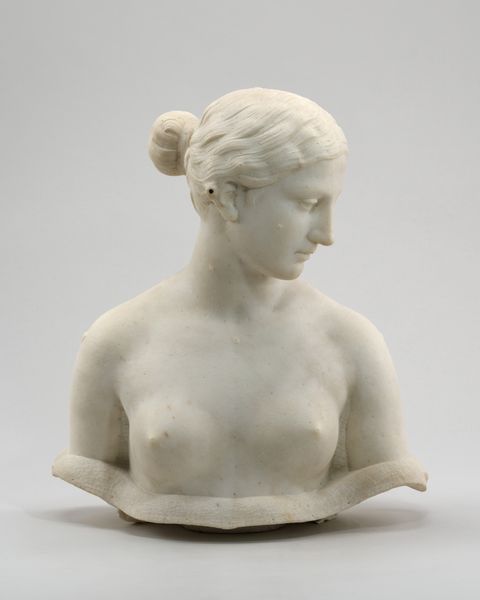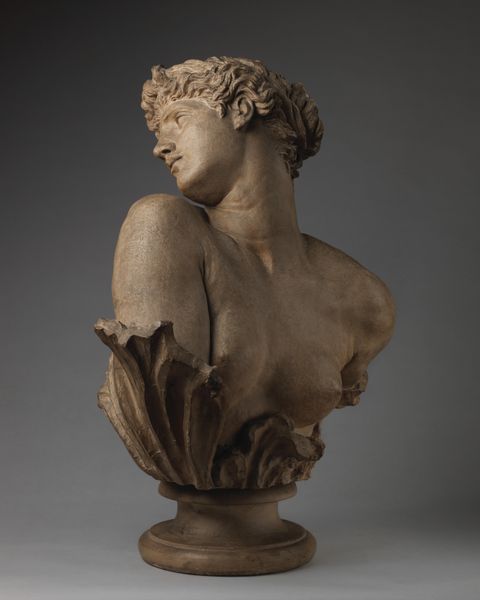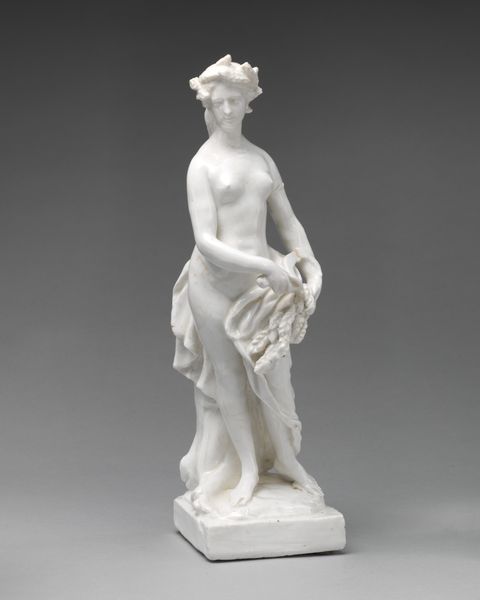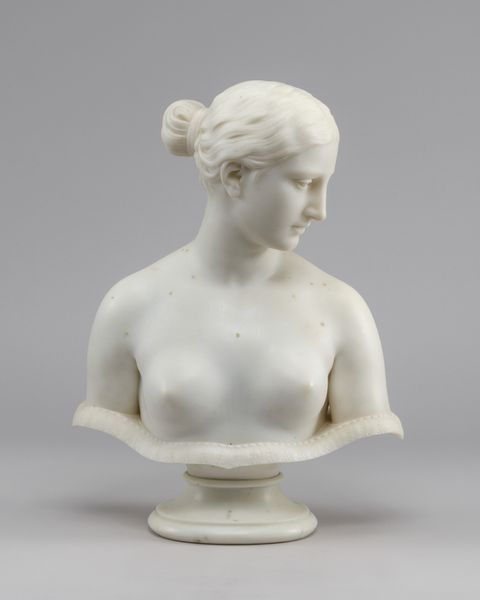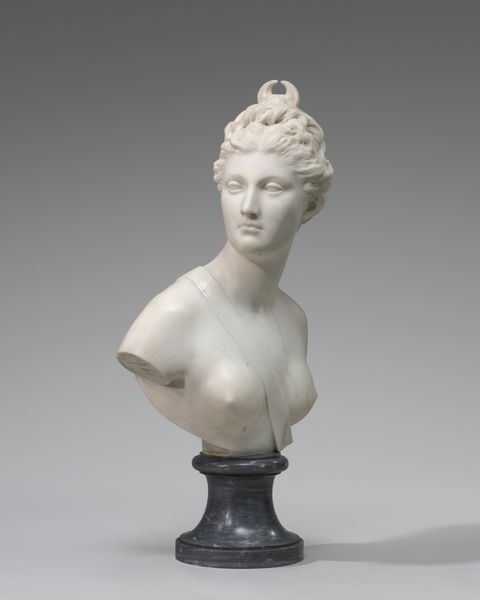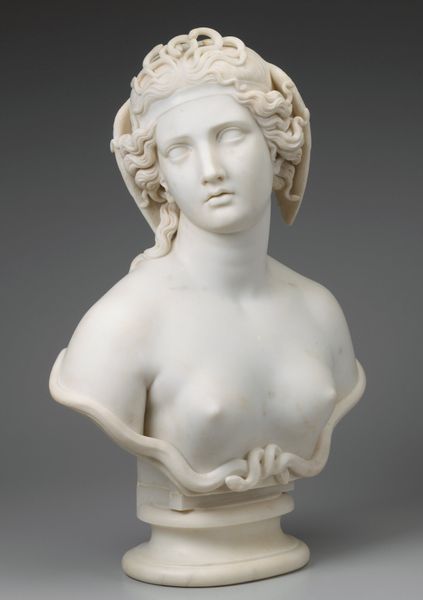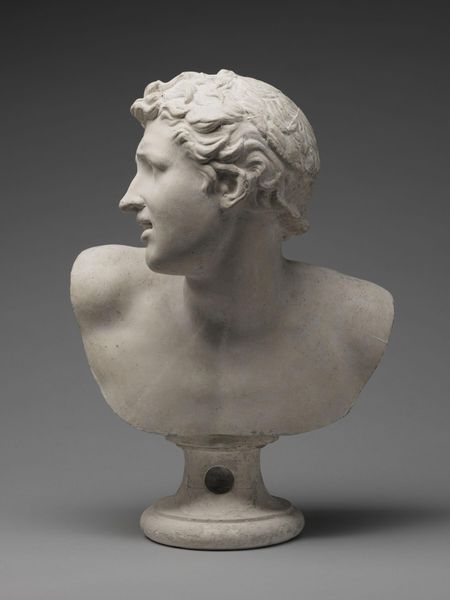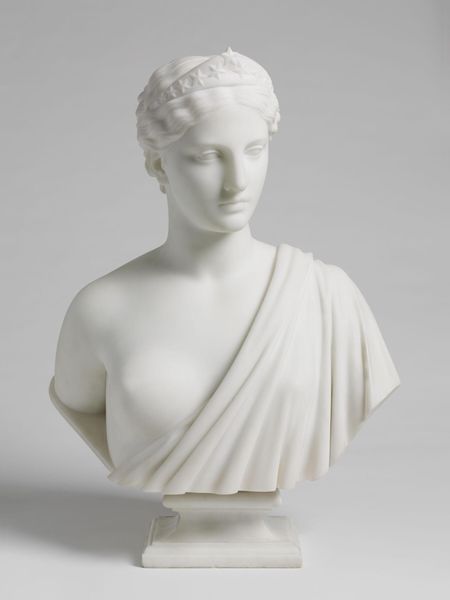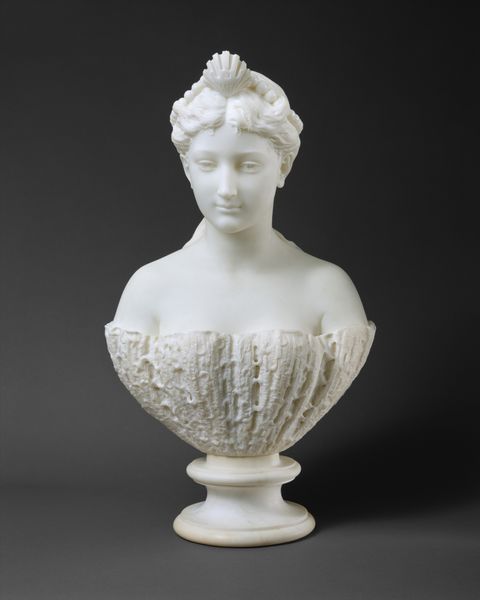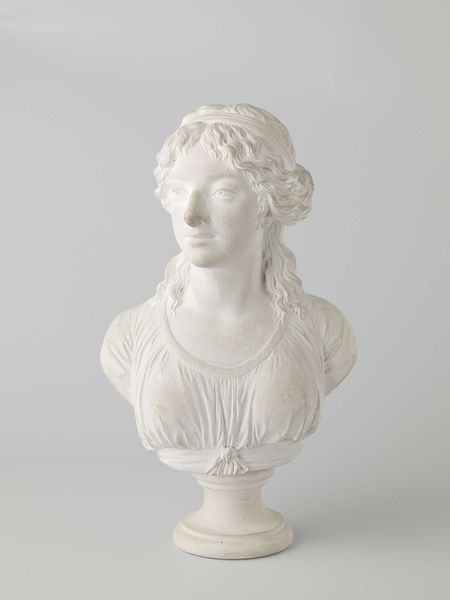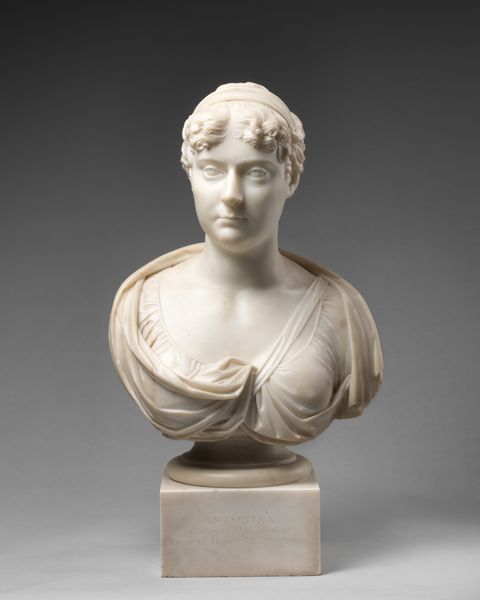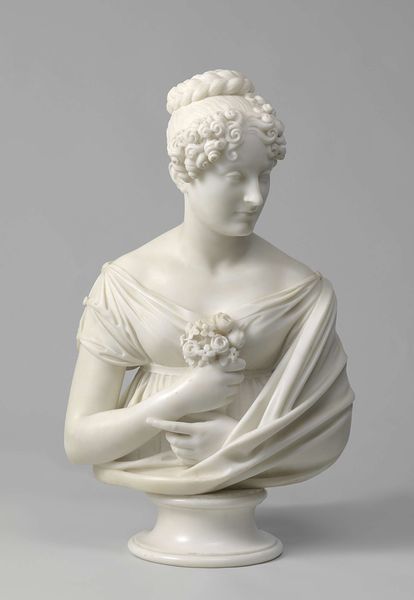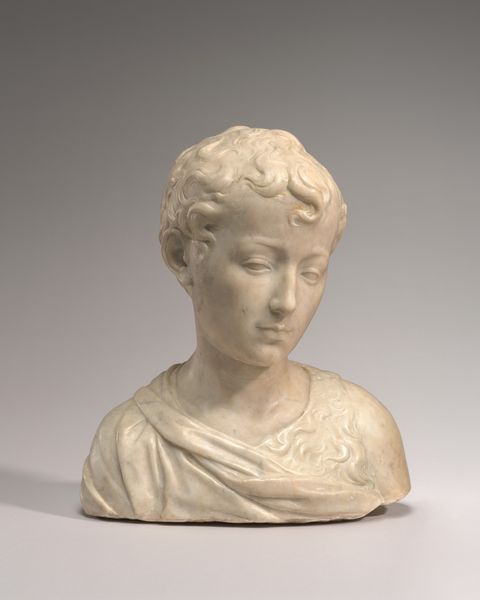
sculpture, marble
#
portrait
#
art-nouveau
#
sculpture
#
academic-art
#
marble
#
realism
Dimensions: overall: 55.4 x 69 x 41.5 cm (21 13/16 x 27 3/16 x 16 5/16 in.)
Copyright: National Gallery of Art: CC0 1.0
Curator: Here we have Auguste Rodin's marble sculpture, "Katherine Seney Simpson (Mrs. John W. Simpson)", created around 1902-1903. Editor: The first thing I notice is the juxtaposition of smooth, polished skin and the rough, unfinished marble surrounding it. There's a dreamlike, almost ethereal quality to the portrait. Curator: Indeed. The choice of marble is key here; it allows for both delicate rendering of form and a sense of permanence, elevating Mrs. Simpson into an almost classical figure. The question is, what kind of labor and socio-economic context does this material choice imply for Rodin's practice at the time, considering the industrial means of quarrying marble in that period? Editor: I see your point. But focus on the forms for a moment! The gentle curve of her neck, the subtle modelling of her features – it speaks of Rodin’s mastery of classical sculpture. Note the use of light and shadow. The way it caresses the cheekbone, and articulates the gaze directs you down, almost demurely. Curator: While Rodin clearly showcases immense skill, it is important to note the commissioning process itself. Such portraits reflected the social capital and aspirations of wealthy families like the Simpsons, emphasizing status and taste through carefully constructed images carved by someone whose workshop surely had many contributing hands.. How does it contribute to a narrative of elite self-representation and consumption in the early 20th century? Editor: But isn't there also a deliberate break with pure realism? He isn’t simply creating a likeness; he’s imbuing it with a certain mood. And by juxtaposing realism with the impression of it having emerged naturally, spontaneously from stone, he transcends pure mimetic exercise and explores something about the subjective reality of both artist and sitter. Curator: To go further into that "subjective reality" requires we understand what motivated such art production within a specific moment in society, involving artist, patron, and also audience. It also suggests that, in itself, this piece, no matter how formally engaging, has the qualities of an important social and economical object. Editor: Fair enough. In appreciating a sculpture like this, we can examine formal decisions on the surface and use our tools of structuralism to investigate the language behind the surface in pursuit of ever-deeper meanings. Curator: I appreciate having considered these two angles. The artwork offers such opportunities for multi-faceted considerations to think further on context, material, form, or reception.
Comments
No comments
Be the first to comment and join the conversation on the ultimate creative platform.
